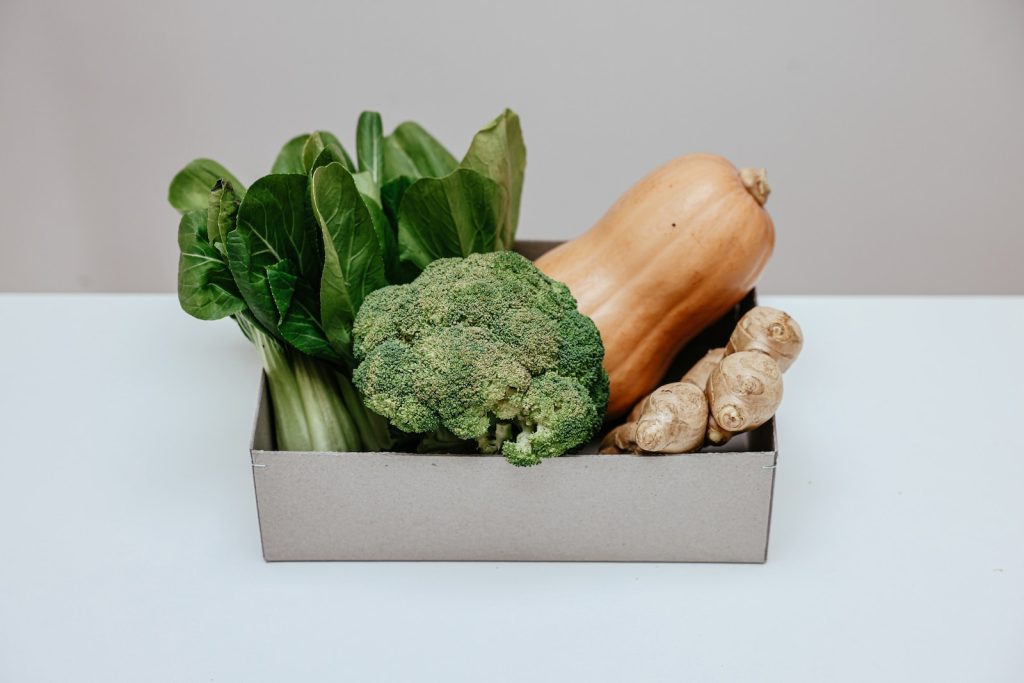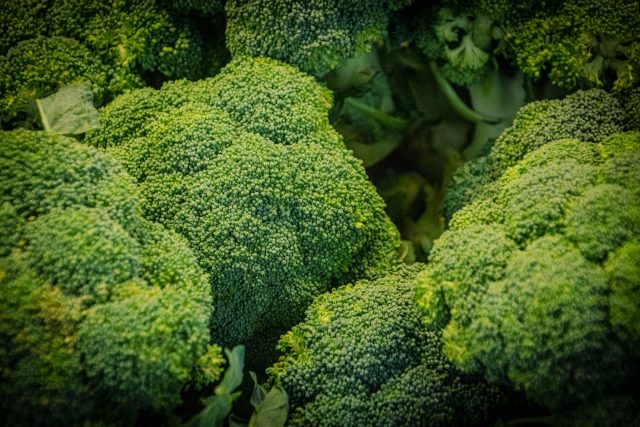Why grow Broccoli?
Broccoli is not just a tasty vegetable, but it also provides many health benefits. It is high in fiber and vitamins A and C, which can help promote healthy digestion, support the immune system, and improve eyesight. Growing your broccoli at home can reap even greater rewards than just enjoying a delicious meal. Learning how to plant and care for broccoli can make you feel healthier while also providing you with an experience that can be both enjoyable and educational. Growing your broccoli will give you access to fresher food that tastes better than store-bought produce. It can also provide numerous mental health benefits, such as reducing stress, increasing mindfulness and improving overall happiness. So why grow broccoli? Because it’s not only nutritious—it’s beneficial in so many ways!
The best time to plant Broccoli
Harvesting a homegrown crop of broccoli can be both rewarding and nutritious. It is essential to understand when and how to plant your broccoli to get the most out of your plants. Knowing the best time to plant this vegetable will help ensure that you get a bountiful harvest.
The optimal time for planting broccoli depends upon the weather in your area but typically occurs in the late winter or early spring months. Planting should begin around six weeks before the average last frost date to give the plants enough time to mature before temperatures become too hot. Additionally, it is essential to note that young seedlings may be susceptible to cold damage from unexpected frosts if planted too early. With careful timing and preparation, growing during this period will yield productive heads of crunchy deliciousness come summertime!
Sunlight: how much sun does Broccoli needs
Sunlight is essential when growing broccoli. Without the right amount of the sun, plants will not be able to develop correctly and will lack the nutrition needed for healthy growth. For broccoli, they must get at least six hours of full sun every day, and anything less than that can cause the plant to become weak and produce fewer heads of broccoli. When planting broccoli, choosing a spot in your garden that receives a full day’s worth of direct sunlight is best. That way, you can ensure your crop will reach its fullest potential in terms of flavor and nutrition. With proper care and enough sun, your harvest will be abundant with delicious heads of fresh-picked broccoli!
Temperature: what temperature range is best for Broccoli
Broccoli is a popular vegetable with many health benefits, so it’s no surprise that more people are looking to plant and care for it in their homes. But did you know that the temperature range you choose for growing your broccoli can affect its growth and quality? Understanding the ideal temperature range for broccoli is important to ensure you get the most out of your garden.
The optimal temperature range for planting and caring for broccoli is between 60-68 degrees Fahrenheit during daytime hours. This allows the plant enough warmth to promote healthy growth while not being too hot or cold, which can cause slow growth or wilting leaves. If temperatures dip below 55 degrees Fahrenheit, cover plants with garden fabric or plastic sheeting at night to keep them warm. Additionally, be sure to water regularly, as extreme heat can cause dehydration in your plants if they don’t have sufficient moisture.
Where to plant Broccoli
If you’re looking to reap the benefits of broccoli in your garden or vegetable patch, it’s essential to know where and how to plant it. Broccoli is an ideal choice for beginning gardeners since it’s easy to grow and an extremely versatile vegetable. Planting broccoli in a sunny spot with rich, well-draining soil is essential for a successful harvest. You are knowing when and how much to water your plants will ensure their optimal growth. With just a little bit of knowledge, you can learn how to plant and care for broccoli to enjoy its delicious taste from your backyard!
Pots: what size pots are best for Broccoli?
When it comes to growing broccoli, choosing the right size pot is essential. With the suitable container and proper care, you can enjoy fresh, healthy broccoli all season long. Knowing what size pot works best for your particular variety of broccoli will help get you on the path to a successful harvest.
Before selecting a pot, you must consider the type of broccoli you’d like to grow. Generally speaking, most varieties need a deep pool with at least 10 inches of space between the top of the soil and the rim of the pool, and this provides enough room for good root development and encourages strong stems. Consider adding an organic fertilizer as well to promote robust growth.
Once planted correctly in its designated pot, ensure that your plants receive plenty of water and sunlight throughout their growing cycle.
Soil: what type of soil is best for Broccoli?
Soil is a crucial element in growing broccoli. Before planting your beloved vegetable, choosing soil that will provide the right environment for this delicate vegetable to thrive.
Loamy soil is the ideal type of soil for broccoli. It should be packed with organic matter and have good air circulation, water drainage, and pH levels between 6-7.5. Adding compost or aged manure to your soil can help improve its fertility and create an optimal environment for your broccoli plants by providing essential nutrients like nitrogen and potassium. Additionally, turn over the top layer of soil so that oxygen can penetrate deep into the ground before you begin planting your seeds or seedlings.
By carefully preparing the soil in advance, you can ensure that your broccoli will receive everything it needs to grow healthy and strong!
How to plant Broccoli?
If you’re looking for a nutritious and delicious vegetable to add to your garden, broccoli is an excellent choice! Broccoli can be planted in the spring or fall and is easy to care for once it’s in the ground. In this article, we’ll discuss how to grow and take care of broccoli so anyone can reap the benefits of this versatile vegetable.
First off, you need to decide when you want to plant your broccoli. Broccoli thrives in cooler temperatures, making early spring or late summer/fall planting ideal. When planting seeds outdoors, please wait until all danger of frost has passed before sowing them directly into prepared soil tilled at least 8 inches deep. For best results, space each seed 12-18 inches apart in rows 18-24 inches wide.
Watering Broccoli
Planting and caring for broccoli plants can be a rewarding experience. Not only will it provide you with the freshest, most nutritious produce from your backyard, but it also requires minimal effort to cultivate and maintain. The key to successful growing is understanding the proper planting techniques, watering, and fertilization techniques. With these tips on how to water broccoli correctly and efficiently, you’ll be enjoying the delicious harvests in no time!
Broccoli needs plenty of moisture throughout the growing season for heads to form correctly. Soil should remain moist, not drenched or dry, and about 1-2 inches deep. Aim for 1 inch of water per week when there’s no rain or irrigation system; adjust this amount if your area receives a lot of rainfall during certain months.
Fertilizing Broccoli
Fertilizing broccoli is an essential part of the gardening process, and it helps to ensure that your crop will yield its maximum potential in terms of nutrition, flavor, and size. When it comes to fertilizing broccoli, there are several factors to consider. The type of fertilizer you use is essential; some fertilizers can be too strong or too weak for certain kinds of vegetables. Additionally, the amount of fertilizer used needs to be carefully monitored as it can directly impact how well your broccoli grows and tastes.
The most common fertilizer used for Broccoli is a slow-release organic compound like compost or manure tea. This ensures that nutrients are released gradually into the soil over time, giving plants an ample supply throughout their growth cycle.
Pruning Broccoli
Pruning broccoli is an excellent way of getting the most out of your crop. It encourages healthy growth, increases yields, and can help keep pests away. Broccoli is an easy vegetable to grow,; with the proper knowledge,, it can be gratifying. Pruning is vital in ensuring that your plants will produce the best quality heads.
To begin pruning, start by removing any dead or damaged leaves from mature plants first, then move on to cutting off flowers as they appear. When pruning, ensure you are not over-pruning, as this can weaken the plant and reduce harvest size. Instead, focus on snipping back any side shoots that have formed along the stem near where head formation occurred – this helps to promote further head development for larger harvests later in the season.
Harvesting: when and how to harvest Broccoli?
Harvesting broccoli is an essential part of the gardening process. Knowing when and how to harvest your broccoli correctly ensures you get the best taste out of your crop. The key to harvesting is timing and technique. Broccoli should be harvested at the right time to maximize flavor and nutrition while avoiding tough or bitter stems.
When it comes to harvesting, look for dark green heads with tiny buds that are firm but not too tight. The best way to pick them is by cutting them off with a sharp knife rather than pulling on the stem. This helps maintain the integrity of the branch and main head, ensuring a better-tasting harvest overall. Depending on where you live, broccoli generally takes about 60-90 days from planting to be ready for harvest.

Troubleshooting common problems with Broccoli
The health benefits of broccoli are undeniable. This hearty vegetable is packed with essential vitamins and minerals, making it a staple in any nutritious diet. But even the most experienced gardeners can experience problems when growing broccoli. To make sure you’re reaping all the rewards of this healthy veggie, it’s important to understand what issues could arise and how to troubleshoot them. In this article, learn how to plant and care for your broccoli crop so you can enjoy its tasty benefits for years to come! From diagnosing common diseases and pest issues to ensuring proper drainage and fertilization, we’ll review everything you need to know about planting and caring for your broccoli plants. With just a little extra TLC, you can be sure that your plants will provide delicious results!






























